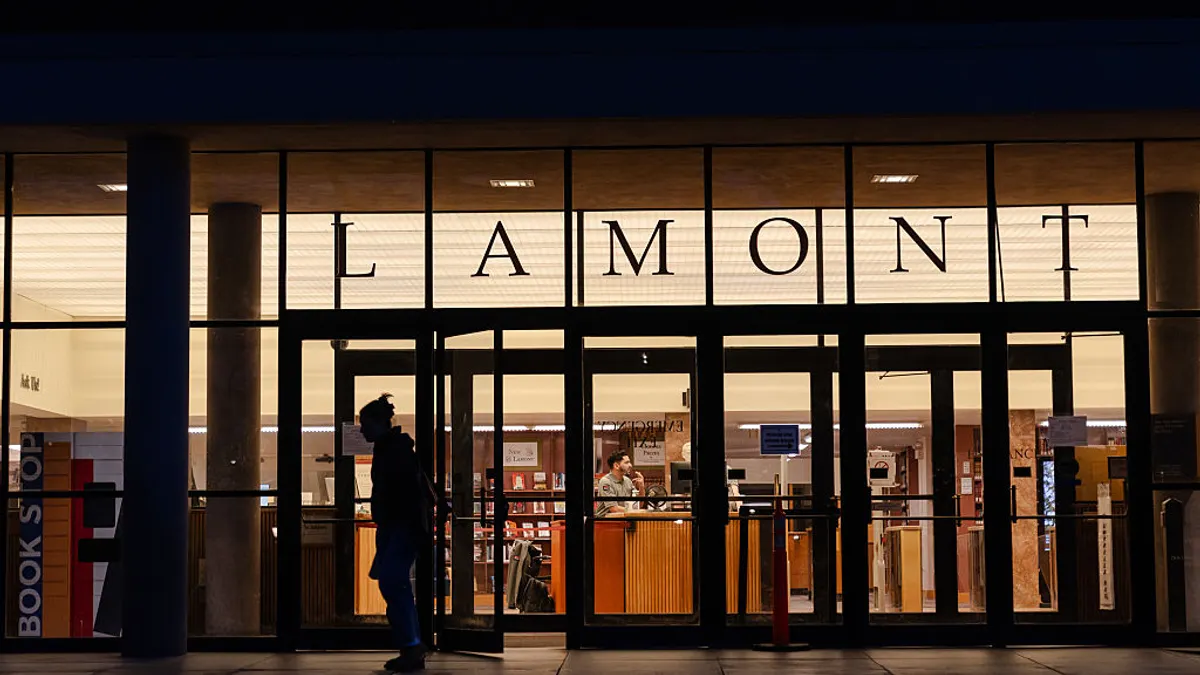Dive Brief:
- Roughly 1.5 million online students were enrolled at institutions in their home states in 2019, compared to around 1.3 million online students attending out-of-state institutions, according to NC-SARA's annual enrollment report.
- NC-SARA collected the data from 1,960 institutions that participate in its interstate reciprocity agreement for distance learning. This is the first year the organization included in-state student data.
- Public institutions accounted for the majority (79.8%) of in-state online enrollment, while the rest was divided between private nonprofits (17.6%) and for-profits (2.5%).
Dive Insight:
NC-SARA, or the National Council for State Authorization Reciprocity Agreements, is an organization that helps enable colleges to offer distance or online education in every participating state and territory. It covers all states but California, and it includes Puerto Rico and the U.S. Virgin Islands.
With the recent inclusion of in-state enrollment data, the organization's annual report strengthens previous findings that students tend to select institutions located near where they live for their online education.
Previous research has found many campus-based students select an institution within a 50-mile radius of their homes. "Our thinking was that that would be mirrored in the online enrollment," said Lori Williams, president and CEO of NC-SARA, in an interview with Education Dive. "And, in fact, it was."
Students often pick local colleges because of their regional brand recognition, Carol Aslanian, president of Aslanian Market Research at EducationDynamics, told Education Dive earlier this year. "The institution nearby is known by employers; it's known by your family and your friends,"
As NC-SARA's report notes, public colleges dominate the market for in-state students studying online, likely because they are "charged to serve students in their own state."
As more colleges launch online programs, one way they can compete with established players is by focusing their recruitment efforts on local students, according to a 2019 report from consultancy Entangled Solutions. For example, it notes, the University of Maryland, Baltimore County is moving many of its graduate programs online with the aim to enroll most of its online students from the Baltimore-Washington region.
Private nonprofit colleges have the largest share of out-of-state enrollment, accounting for 44.2% of such students, the report notes. Private for-profits enrolled 33.9% of the online out-of-state students, and public institutions enrolled 21.9%.
Colleges' marketing efforts could be one driver of these trends. "Large online private institutions, whether for-profit or nonprofit, tend to put a lot of their marketing dollars into advertising nationwide," Williams said. Public institutions, meanwhile, are "going to be advertising within their states," she added.
Of the 10 largest institutions responding to the survey, nine were either private nonprofit or for-profit colleges.
Western Governors University had the highest enrollment with just over 120,000 students. The University of Phoenix and Southern New Hampshire University rounded out the top three.
The University of Maryland Global Campus, with roughly 48,000 students, was the only public institution to crack the top 10.
Private colleges have made plays recently to recruit out-of-state students. Earlier this year, Southern New Hampshire said it would allow students from any of Pennsylvania's community colleges to apply up to 90 credits to an online bachelor's degree and receive a 10% discount on tuition. The university has similar agreements with community college systems in Kentucky and Massachusetts.
Similarly, Western Governors announced this month that it is offering $125,000 in scholarships to students affected by the closure of Concordia University-Portland, in Oregon, at the end of the spring semester.










